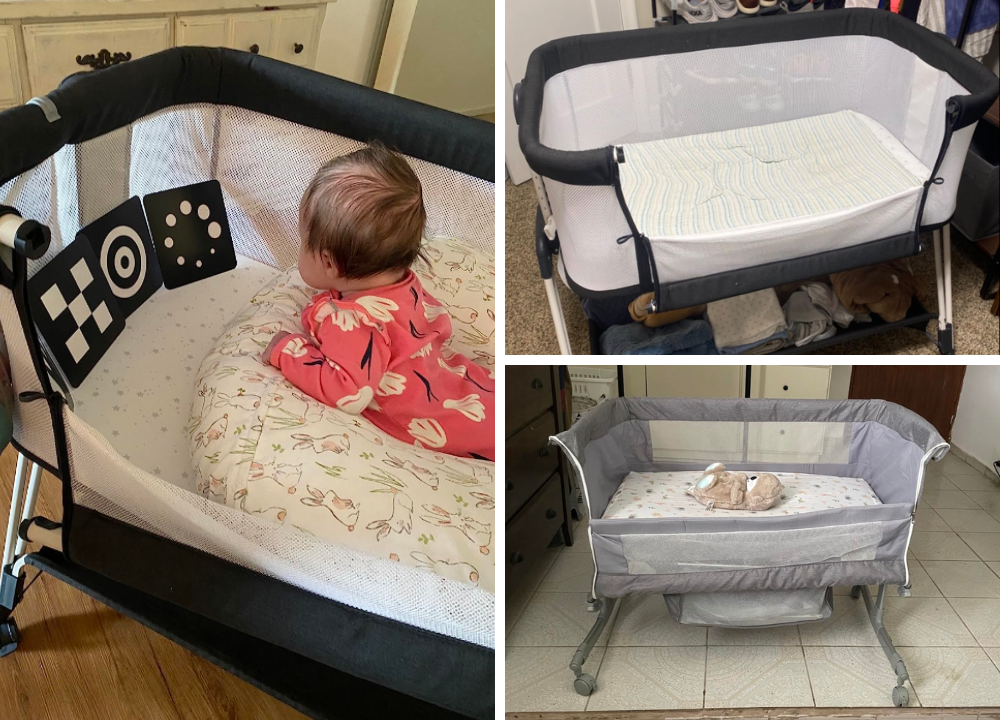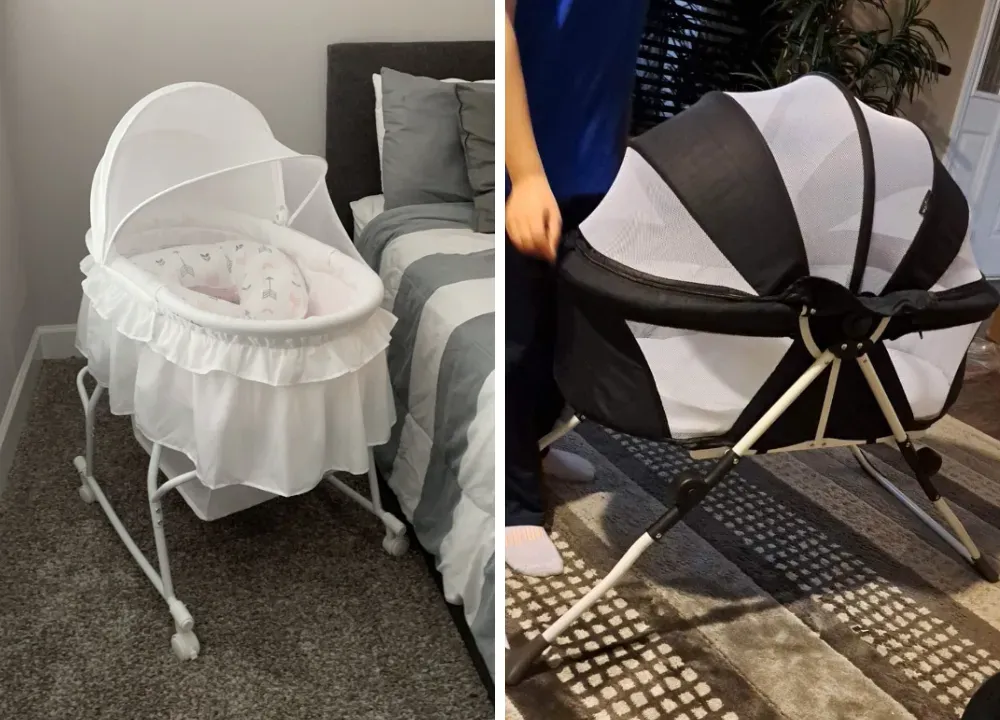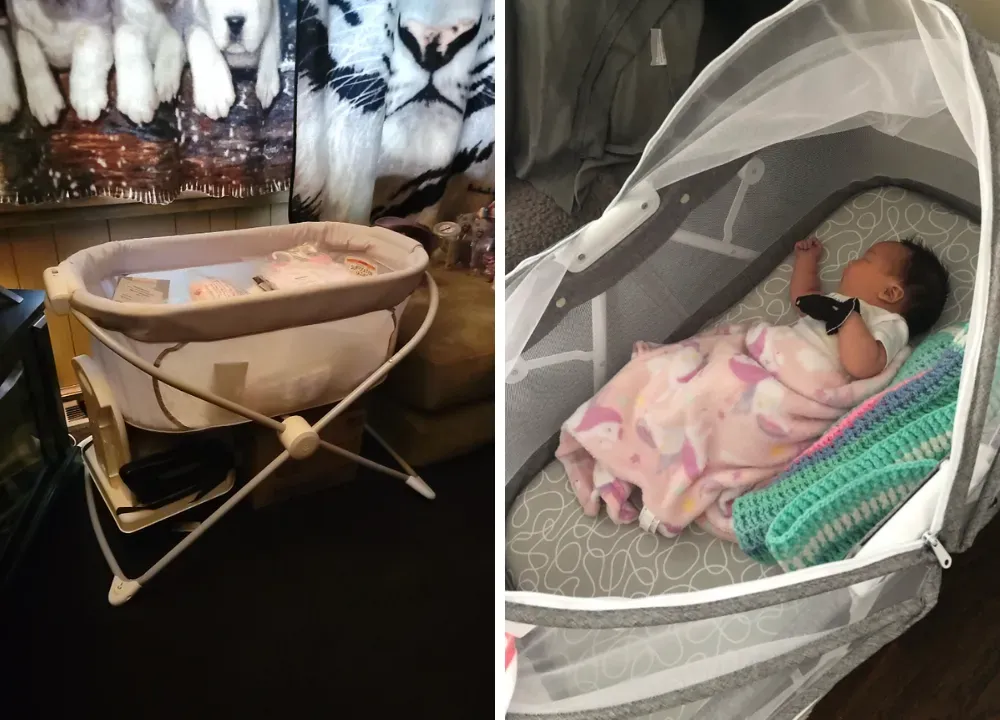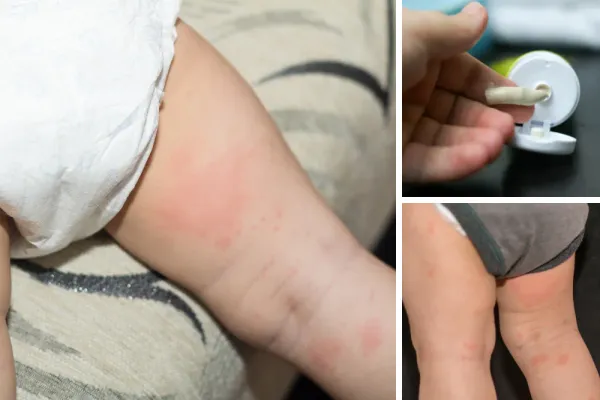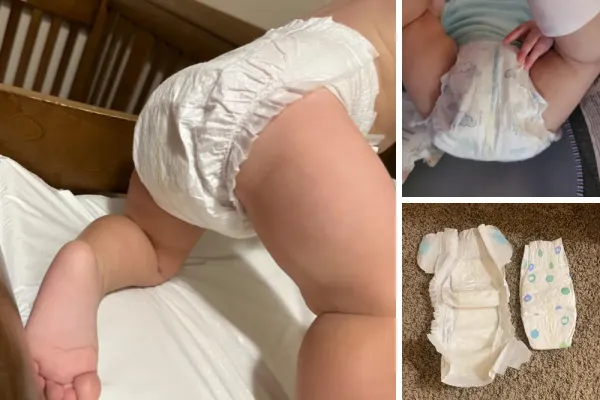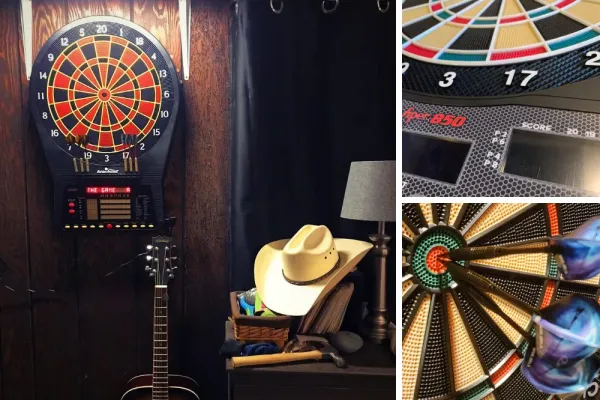Welcoming a newborn into your home is a joyous occasion, but it also comes with its fair share of challenges, including ensuring your little one gets a good night's sleep.
Many new parents ask, "How can I get my newborn to sleep in a bassinet?"
This comprehensive guide is designed to provide you with practical advice and strategies to help your newborn baby establish healthy sleep habits and sleep peacefully in their bassinet.
Key Takeaways:
- Understand the importance of establishing a bedtime routine for your newborn.
- Creating a safe sleep environment that adheres to safe sleep guidelines is crucial for both the safety and comfort of the sleeping baby.
- Discover practical tips and techniques to encourage your newborn to sleep in the bassinet.
Establishing a Bedtime Routine

Creating a consistent bedtime routine is crucial for signaling to your newborn that it's time to wind down and prepare for sleep. Start by choosing a specific time each night to begin the routine, which may include a warm bath, gentle massage, or soft lullabies. Consistency is key, as it helps set your baby's internal clock and makes it easier for them to anticipate and settle into sleep time.
In addition to a set routine, it's important to pay attention to your newborn's sleep cues. Newborn babies often have a "sweet spot," a period during their routine when they're naturally drowsy and more likely to fall asleep without much fuss. This usually occurs after feeding and a short period of being awake.
These can include rubbing their eyes, yawning, or becoming fussy. When you notice these signs, it's time to start the bedtime routine, even if it's earlier than planned. Responding to these cues helps reinforce natural sleep patterns and makes the transition to the bassinet smoother.
Creating a Comfortable And Safe Sleep Environment
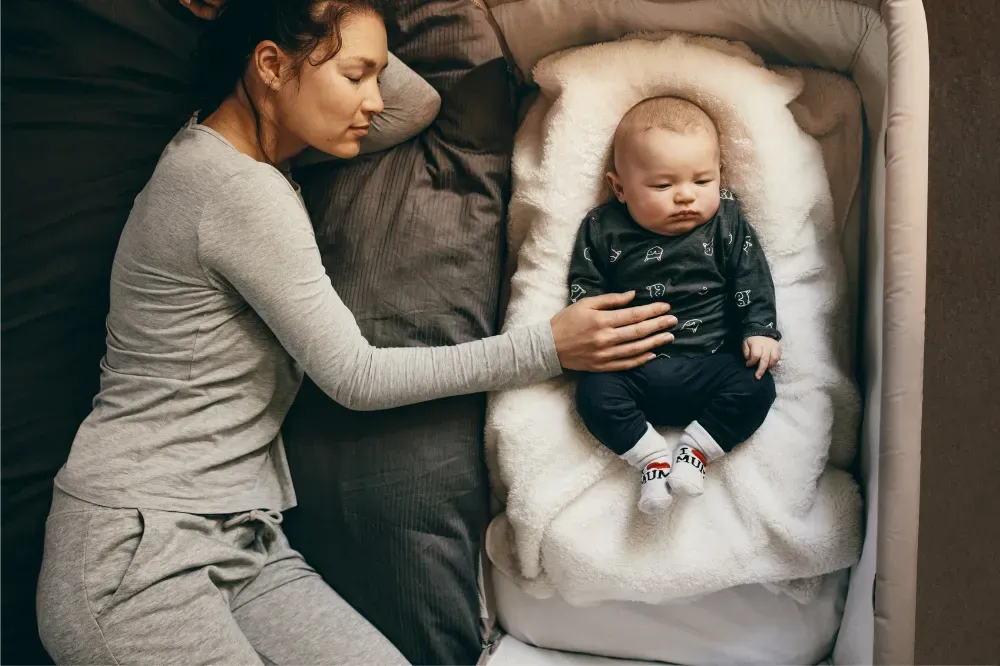
The environment in which your newborn sleeps can significantly impact their ability to rest well. Ensure the bassinet is placed in a quiet, dark room with a comfortable room temperature. Consider using a white noise machine to drown out any disruptive sounds and to provide a soothing backdrop for sleep.
The bassinet itself should be equipped with a firm mattress and fitted sheet, with no loose blankets or sleep positioners. The American Academy of Pediatrics recommends keeping the baby's sleep area free of stuffed animals, pillows, and other soft items to reduce the risk of Sudden Infant Death Syndrome (SIDS). A well-designed sleep environment not only promotes safety but also encourages your newborn to associate the bassinet with comfort and security.
Swaddling for Better Sleep

Swaddling is an age-old technique that can help a fussy baby feel secure and warm, similar to the environment of the womb. When done correctly, swaddling can prevent the baby's startle reflex during their light sleep phase, which often wakes them, and can be a comforting tool to help your newborn sleep in their bassinet.
It's important to swaddle your newborn safely, ensuring that the swaddle is snug but not too tight and that it allows for hip movement. Always place your swaddled baby on their back to sleep, and monitor them to make sure they don't overheat. As your baby grows and begins to roll over, it's time to transition away from swaddling.
Transitioning out of a swaddle can be done gradually by leaving one arm out initially, then both, before moving to a sleep sack, which is a safe sleep space alternative that still provides some level of snugness but allows for more movement.
The Power of Scent and Touch

Your newborn is highly attuned to your scent and touch, which can be leveraged to help them feel more comfortable in their bassinet. Consider placing a worn shirt or cloth that smells like you near the bassinet, as this can be reassuring for your baby. Additionally, gently placing your hand on your baby's chest or softly stroking their head as they lie in the bassinet can provide the comfort they need to drift off to sleep.
Remember, however, to remove any objects from the bassinet before leaving your baby to sleep, as these can pose a safety hazard. The goal is to use scent and touch to create a positive association with the bassinet, making it a place where your baby feels safe and loved.
Feeding and Burping Before Bed
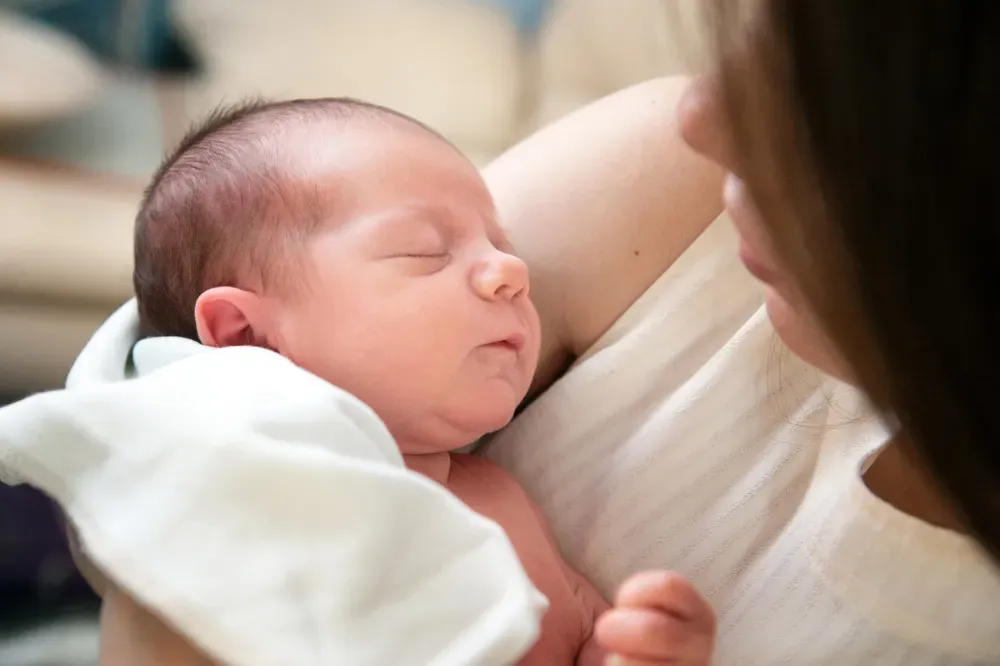
A well-fed baby is more likely to sleep soundly, so ensure your newborn has a full tummy before attempting to put them down in the bassinet. Whether you're breastfeeding or bottle-feeding, take the time to burp your baby thoroughly after feeding to prevent discomfort from gas that could disrupt their sleep. A dirty diaper can also prevent a baby from falling asleep or cause them to wake up. Before putting your baby in the bassinet, ensure they have been fed and burped and have a clean diaper.
Once your baby is fed and burped, hold them upright for a short period to reduce the likelihood of reflux, which can be uncomfortable and may cause them to wake up. When your baby seems drowsy but not fully asleep, it's the perfect time to transition them to the bassinet. If your baby wakes up in the middle of the night, check these basic needs first before assuming they are having a hard time sleeping.
The Importance of Daytime Naps

Believe it or not, good nighttime sleep starts with proper daytime naps. An overtired baby will have a harder time settling down at night, so make sure your newborn gets adequate sleep during the day. Observe their natural sleep patterns and create a daytime nap schedule that aligns with their needs.
While it's important for your baby to nap well during the day, try to keep the environment slightly different from nighttime sleep. This can include a bit more light and noise, which helps your baby differentiate between day and night, reinforcing the idea that the bassinet is primarily for longer nighttime sleep.
Using a Pacifier for Self-Soothing
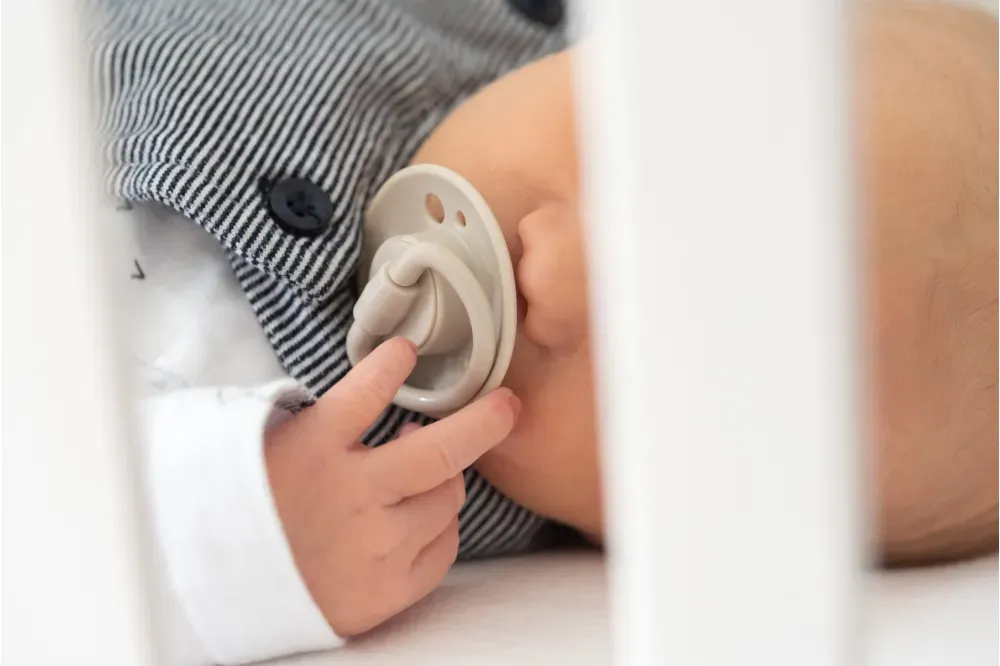
For some babies, a pacifier can be a helpful tool for self-soothing and settling into sleep. If your newborn takes to a pacifier, it can be used as part of the bedtime routine to help them calm down and prepare for sleep in the bassinet.
It's important to introduce the pacifier when your baby is calm and to avoid using it as a first-line solution for every fuss. This helps your baby learn to self-soothe without becoming overly dependent on the pacifier. Additionally, pacifiers have been linked to a reduced risk of SIDS, making them a beneficial addition to safe sleep practices.
Managing Their Environment - The Role Of Noise And Temperature

While some noise is unavoidable, minimizing loud and sudden sounds can help your baby sleep peacefully. A consistent white noise can mask disruptive sounds and provide a soothing backdrop for sleep. Be mindful of the volume and placement of the sound machine to ensure it's effective without being too loud for your baby's sensitive ears.
The room temperature where your baby sleeps can affect their comfort and safety. The ideal temperature for a baby's room is between 68-72°F (20-22°C). Dress your baby appropriately for the room temperature and avoid overheating, which is a risk factor for SIDS. A sleep sack can provide the right amount of warmth without the need for additional blankets.
Monitoring and Adjusting for Comfort

As you work on getting your newborn to sleep in the bassinet, pay close attention to their responses and comfort level. If your baby seems uncomfortable or unable to settle, it may be necessary to adjust the sleep environment, the tightness of the swaddle, or the timing of the bedtime routine.
Be patient and willing to experiment with different strategies to find what works best for your baby. Each newborn is unique, and what soothes one baby may not work for another. The key is to be observant and responsive to your baby's needs, making adjustments as necessary to ensure their comfort and safety in the bassinet.
The Role of Patience and Consistency

Patience and consistency are your best allies when it comes to establishing good sleep habits for your newborn. It may take several nights, or even weeks, for your baby to become accustomed to sleeping in the bassinet. Stick with your routine and the strategies you've chosen, and avoid the temptation to change tactics too frequently.
Consistency in your approach not only helps your baby learn what to expect at bedtime but also builds trust. When your baby trusts that you will respond to their needs and that the bassinet is a safe place to sleep, the transition will become smoother over time.
When to Seek Professional Advice
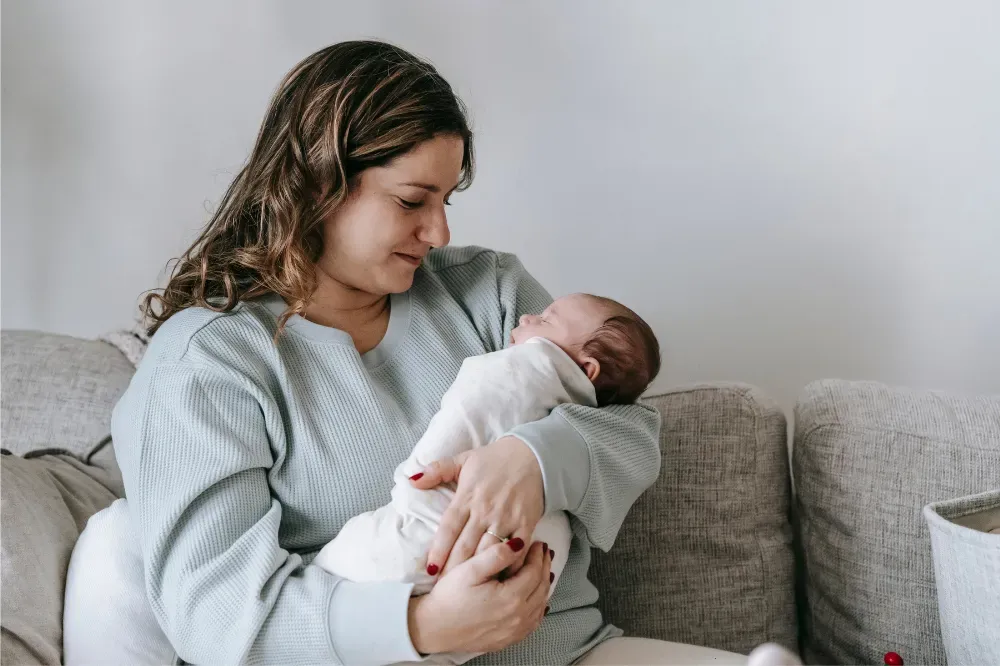
If you've tried all the strategies and your newborn still struggles to sleep in the bassinet, it may be time to seek professional advice. Consult with your pediatrician to rule out any underlying medical issues that could be affecting your baby's sleep. Additionally, a sleep consultant or specialist can offer personalized advice and support tailored to your baby's specific needs.
Remember, it's normal for newborns to take time to adjust to sleeping in a bassinet, and seeking help is a proactive step in ensuring your baby's well-being and your peace of mind.
Summary
Getting your newborn to sleep in a bassinet involves establishing a bedtime routine, creating a comfortable sleep environment, and using techniques like swaddling, scent, touch, and pacifiers for soothing. It's essential to be patient, consistent, and responsive to your baby's needs as they learn to associate the bassinet with sleep. If challenges persist, don't hesitate to seek professional advice.
FAQ Section
How long should I try a sleep strategy before deciding it's not working?
Try a sleep strategy consistently for at least one to two weeks before making any changes. This gives your newborn time to adjust and for you to assess its effectiveness.
Can I put my newborn to sleep in a bassinet with a blanket?
For safety reasons, it's best to avoid placing loose blankets in the bassinet. Instead, dress your baby in appropriate sleepwear or use a sleep sack to keep them warm.
What if my baby falls asleep while being fed or held? Should I wake them to put them in the bassinet?
If your baby falls asleep while feeding or being held, you can gently transfer them to the bassinet without waking them. It's important for your baby to associate the bassinet with sleep, even if they initially fall asleep elsewhere.
Why won't my newborn sleep in a bassinet?
Newborns can often resist sleeping in their bassinets because they are used to the warmth and close contact of their mother's womb. The open, spacious environment and flat surface of a bassinet can seem unfamiliar and uncomfortable. It's also important to remember that babies' sleep patterns differ from adults. They have shorter sleep cycles and spend more time in REM sleep, which is easier to wake from.
How do you settle a newborn in a bassinet?
Settling a newborn in a bassinet involves creating a comfortable and soothing environment. This can be achieved by swaddling the baby, using white noise, and ensuring the room is at an appropriate temperature. A consistent bedtime routine can also help signal to your baby that it's time to sleep. Remember, each baby is different, so what works for one may not work for another.
Why does my newborn wake up when I put her in the bassinet?
Newborns have a strong instinct for proximity to their parents, especially their mother, due to the scent, warmth, and heartbeat. When you put your newborn in the bassinet, they might suddenly wake up because they feel the absence of these comforting factors. Also, the change from a warm cuddle to the comparatively cooler bassinet can jolt them awake.
How do I get my baby to sleep in his bassinet instead of being held?
Transitioning a baby from being held to sleeping in a bassinet can be challenging but is an essential part of sleep training. Start by putting your baby down when they're drowsy but still awake. This helps them associate the bassinet with falling asleep. You can also try warming the bassinet with a heating pad before laying your baby down (remove the pad first!). Consistency is key, so try to stick to a routine and be patient, as this transition can take some time.
